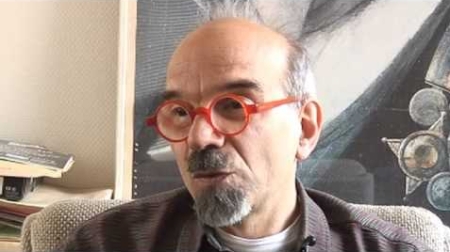
In my previous blog “Climate modelling nonsense” I urged the hopefully existent visitor to read the excellent article of Serge Galam “Global Warming: the Sacrificial Temptation” which is available at arXiv and was published in 2007.
Firstly, Serge Galam is a physicist, with 2 PhD’s received in 1975 and 1981 at the universities Pierre et Marie Curie in Paris and the university of Tel Aviv. After some time spent in New York and the French CNRS, he joined the CREA of the famous Ecole Polytechnique. CREA stands for “Centre de Recherche en Epistémiologie Appliquée”, which means that Serge Galam has moved over to more philosophical problems, and may now correctly be called a philosopher. He firmly opposes the scientists who becoming politicized have abandoned the scientific method (in his book “Les Scientifiques ont perdu le Nord”, Plon, 2008) and remains very skeptical about man-made global warming or climate change.
So for those of you who never have time to read an article from start to end, let me just give here seven of what I find the most remarkable sentences in the cited article.
1. The debate about global warming has taken emotional tones driven by passion and irrationality while it should be a scientific debate.
2. In the past of human history, the identification of a single responsible of all the difficulties and hardships of a society has always produced huge human destructions.
3. The unanimity exhibited everywhere is indeed obtained by the exclusion of any person who dares to cast a doubt about the man guilt truth.
4. … science has nothing to do with neither unanimity nor the number of voters.
5. It is not the duty of the sceptics to have to brig a proof of whatever it is about which they are sceptical… Rather, it is up to the scientists making the new assertion who must bring the corresponding proog, in this case of human guilt.
6. In case the current climate changes have natural causes, focusing our entire efforts on a drastic reduction of anthropogenic carbon dioxide emissions, implying a suppression of advanced technologies, could leave us defenceless in the face of a newly hostile nature.
7. Most caution should be taken to prevent opportunistic politicians, more and more numerous, to subscribe to the proposed temptation of a sacrifice frame in order to reinforce their power by canalizing these archaic fears that are reemerging.
What a marvelous last sentence! The German physicist Dr. Gert Weber from the Max Planck Institut gave in 1993 in his book “Der Treibhauseffekt” a similar conclusion: “Heute werden auf eine Weise Forschungsgelder verteilt und Berichte geschrieben, dass sich daraus eine positive Rückkopplungsschleife bildet, die allen Beteiligten Gewinne abwirft. Die Wissenschaftler bekommen mehr Forschungsgelder, die Medien neue Empörungsgeschichten…, den Politikern erschliesst sich ihr Stimmenpotential.”
This said, I wish you happy, sunny and warm Eastern holidays!
 We see that the Antarctic has not warmed at all, and the global oceans (which might represent the best estimate for global warming) by about o.o8 °C/decade, which extrapolated would mean a warming of about 0.8°C at 2080; clearly nothing to be afraid of!
We see that the Antarctic has not warmed at all, and the global oceans (which might represent the best estimate for global warming) by about o.o8 °C/decade, which extrapolated would mean a warming of about 0.8°C at 2080; clearly nothing to be afraid of!





